Last week, the Government Accountability Office (“GAO”) released its Bid Protest Annual Report to Congress for FY 2023. The Annual Report reflects that GAO had a record-breaking year of protest activity. We note, however, that these statistic are skewed by “an unusually high number of protests challenging a single procurement,” the National Institute of Health’s CIO-SP4 GWAC procurement.
Below, we highlight 5 key takeaways from this year’s edition of GAO’s bid protest statistics:
1. 5-Year Comparison of GAO’s Bid Protest Statistics: In the chart below, we summarize GAO’s bid protest statistics for the past five fiscal years:
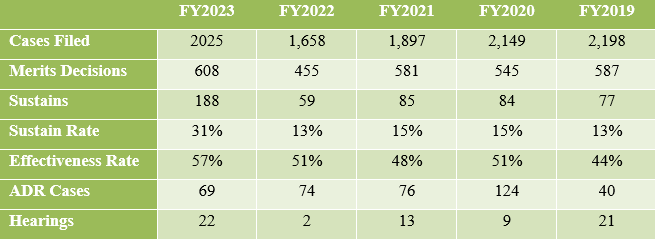
2. Bid Protest Filings Increased 22%: In recent years, the total number of protest filings at GAO decreased substantially, a staggering 36% between FY2018 and FY2022. In FY2023, the total number of bid protests rebounded with a 22% increase. However, when the 354 protests in the CIO-SP4 procurement are removed, the remaining 1671 protest filings is comparable to FY2022.
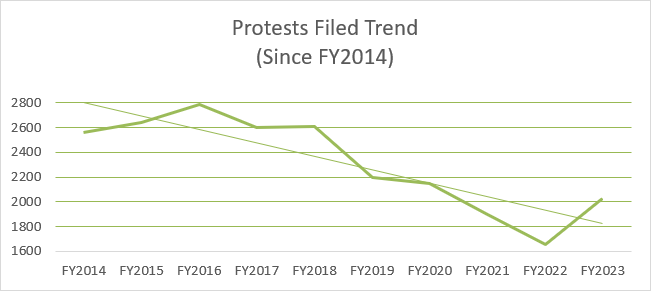
3. Sustain Rate Increased 18%: In the last 5 years (FY2018 – FY2022), GAO’s sustain rate remained steady at an average of 14%. This came after a prior all-time high of 23% in FY2016, followed by 3 straight years of decreases in the sustain rate. For FY2023, GAO’s sustain rate was a record-setting 31%. However, as noted above, the sustain rate would match the prior 5-year average of 14% without the 119 protests GAO sustained in the CIO-SP4 procurement.
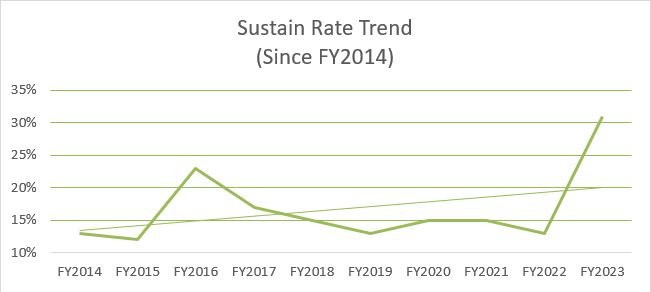
4. Effectiveness Rate Hits All-Time Record of 57%: This year’s report indicates that protesters continue to enjoy a high success rate, reflected in the “Effectiveness Rate.” GAO utilizes this measurement to determine the rate at which protesters obtain some form of relief, typically either voluntary corrective action or a sustained protest. It is difficult to calculate what the Effectiveness Rate would be if the 119 protests GAO sustained are removed. However, we expect FY2023 would follow the similar trend of a near 50% Effectiveness Rate.
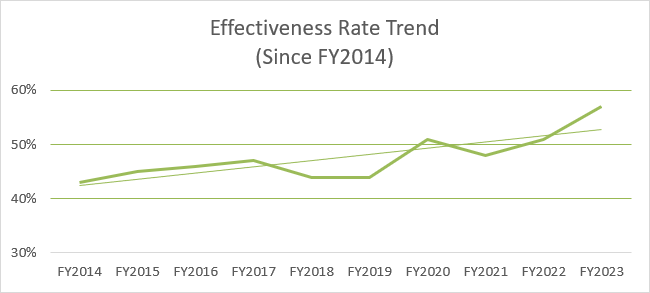
5. Familiar Grounds for Sustaining Protests: Each year, GAO highlights the “Most Prevalent Grounds for Sustaining Protest.” In FY2023, the most common bases were: (i) unreasonable technical evaluation; (ii) flawed selection decision; and (iii) unreasonable cost or price evaluation. This should come as no surprise. These 3 bases of protest lead the others by a wide margin as the most common arguments sustained by GAO.
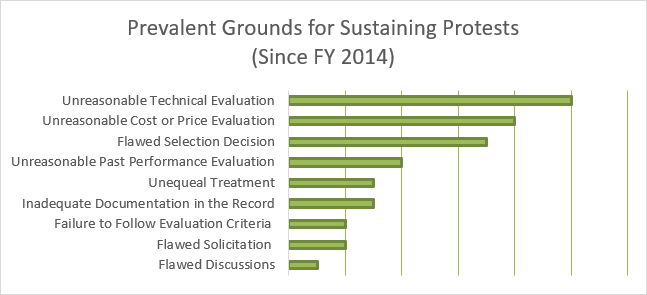
Subscribe to get our Insights delivered to your inbox.
This publication is designed to provide general information on pertinent legal topics. The statements made are provided for educational purposes only. They do not constitute legal or financial advice nor do they necessarily reflect the views of Holland & Hart LLP or any of its attorneys other than the author(s). This publication is not intended to create an attorney-client relationship between you and Holland & Hart LLP. Substantive changes in the law subsequent to the date of this publication might affect the analysis or commentary. Similarly, the analysis may differ depending on the jurisdiction or circumstances. If you have specific questions as to the application of the law to your activities, you should seek the advice of your legal counsel.